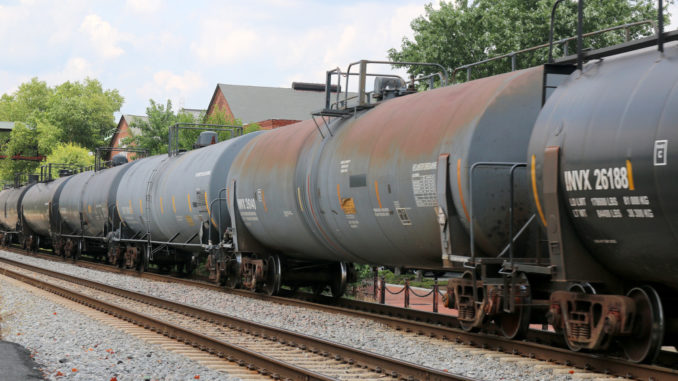
Tank cars are used to carry gasses or liquids, and the contents can either be transported under pressure or un-pressurized. There are about 265,000 tank cars on the rails today.
In 1865, during the Pennsylvanian oil rush, crude oil was transported using flatcars that had banded wooden planks or decking mounted on top for the first time.
The Rotary Oil Car, an invention by Laurence Myers of Philadelphia, improved a patent from 1851 that was originally created for transporting coal. This new invention, patented on July 18, 1865, was specifically designed for transporting crude oil and petroleum. This marked the first use of an oil tank on a railroad flatcar.
In 1903, railroads were operating more than 10,000 tank cars. That year, tank-car companies developed construction safety standards.
By 1915, some 50,000 tank cars are in use. That year, the tank-car industry developed a classification system to ensure the correct match of car type to the product being shipped.

